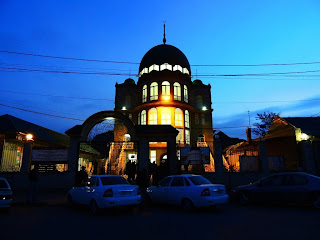
Salafism in North Caucasus Now Very Different than a Decade Ago
By Paul Goble
Salafism or “pure Islam,” which often serves as the basis for political radicalism and militant activism, is a very different phenomenon today in the North Caucasus than it was only a decade ago, according to one of Russia’s leading specialists on the trend. According to Moscow Islamicist Dmitry Nechitaylo, this change reflects the fact that its followers are younger, more educated, more urban and more independent of the national traditions that have long determined matters of faith and behavior among the various Muslim peoples of the region.
In an article prepared for the Ohranka.com portal, Nechitaylo, who has written numerous books on Islamist trends, says that “since the beginning of the 2000s, Salafism as a movement […] in the North Caucasus has undergone fundamental changes.” In the 1990s, it consisted of small communities of jamaats at the margins of society. The level of religious knowledge among its leaders was “very low,” and those who followed it were distinguished primarily by their “radical methods of struggle against traditional Islam” (ohranka.com/archives/35813).
Now, Salafist ideas are increasingly found among educated and urban groups, “many of whom have received training in Arab countries. A decade ago, most of the North Caucasians studying abroad came from rural areas in Chechnya or Dagestan, but now, Nechitaylo says, almost all of the non-Russian nationalities in the region supply part of this flow. While some who go to Syria, Turkey or Malaysia return as representatives of what could be called “moderate” views, those who go to the core regions of the Arab world have generally come back as convinced Salafists.
At the same time, the average age of Salafis in the North Caucasus has dropped from 30–35 to 20–25, a reflection of increasing anger among young people that Moscow has failed to address their need for jobs. Indeed, polls show that many school children now support the Salafis. And the geographic origins of this group have changed as well. In the 1990s, most Salafis were from rural areas and had little or no advanced education. Now, “ever more urban residents with higher levels of education have joined the ranks of the militants.” This urban origin also means that the new Salafis are less affected by the national and cultural traditions of their parents as family ties have weakened.
The younger and more educated Salafis of today, Nechitaylo continues, prefer “Islamic intellectuals from their own milieu who have encountered in their daily life the same problems they have,” and these young people are less inclined to listen to official mullahs, whom they view as too subservient to the powers that be. As a result, there has been a significant “decline in the authority of the official muftiate in the Caucasus.”
Force alone will not be enough to defeat these new Salafis, Nechitaylo insists. Instead, the authorities must make a concerted effort to reintegrate militants and legalize rather than outlaw Salafi trends. That will become possible when officials recognize that although most Salafis call for the use of shariat law, few support the overthrow of the existing state and the establishment of a caliphate.




